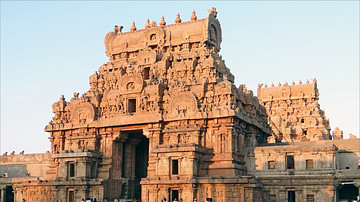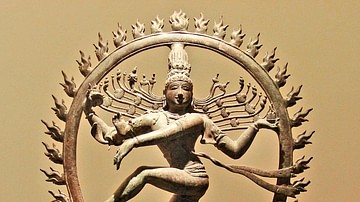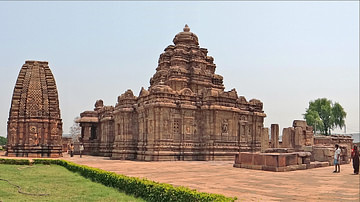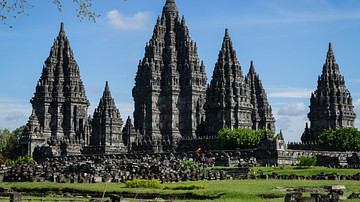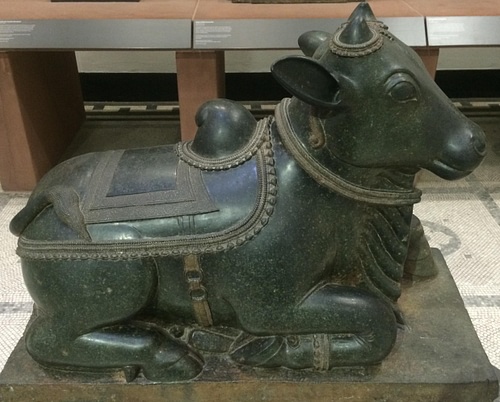
Nandi (also Nandin) is the sacred bull calf, gatekeeper, and vehicle (vahana) of the Hindu god Shiva. Sculptures of Nandi are a common sight at Hindu temples dedicated to his master, and he is partly responsible for the Hindu reverence for living bulls even today, especially in the state of Uttar Pradesh.
Nandi's Roles
According to the Vayu Purana, Nandi is the son of Kasyapa and Surabhi. In the Saura Purana Nandi, his role as Shiva's gatekeeper is described as, 'adorned with all ornaments, glowing like a thousand suns, holding a trident in his hand, three-eyed, adorned with a sliver of the moon, a thunderbolt in his hand, four-armed, like a second Sankara [Shiva]'.
Besides being Shiva's vehicle, Nandi is also the chief of the god's team of ganas or attendants, and consequently he often carries a golden staff of office. His other duties include being the guardian of all quadrupeds and the provider of music as Shiva dances the tandava, the cosmic dance of creation.
Nandi Battles Indra
In the Brhaddharma Purana it is Nandi who, at the command of Shiva, kills the elephant demon Airavata, who actually belonged to the god Indra. Nandi had been given the task of finding a replacement head for the god Ganesha who had lost his in an unfortunate accident involving his father Shiva. Naturally, Indra was not best pleased with this plan and so hurled various projectiles at Nandi to stop him. However, Nandi easily swept aside Indra's mace, trident, and thunderbolt. Indra next gathered his huge army together and subjected Nandi to a fearsome rain of arrows. Nandi, whose body is as hard as rock, was untroubled by this salvo and, laughing nonchalantly, proceeded to lop off Airavata's head anyway. The head was soon added to Ganesha's body, and Shiva was delighted with Nandi's handiwork.

Representation in Art
A statue of Nandi is present as a bull sitting on a plinth in front of most Hindu temples dedicated to Shiva, especially Dravida (Southern) temples. He sits in a dedicated columned pavilion known as a nandi mandapa and is positioned so that he gazes in adoration at Shiva's linga within the main temple . The bull is often dressed by worshippers with bells, clappers, and a necklace of flowers. At Javanese temples Shiva can take the form of a bull, known as Nandi-Kesvara, and he often stands guard holding a trident in one hand and a lotus flower in the other. In Hindu paintings Nandi most often appears ridden by Shiva and has a pure white skin. He also appears with Shiva on 1st-2nd century CE gold coins minted by the Kushanas in Gandhara.

